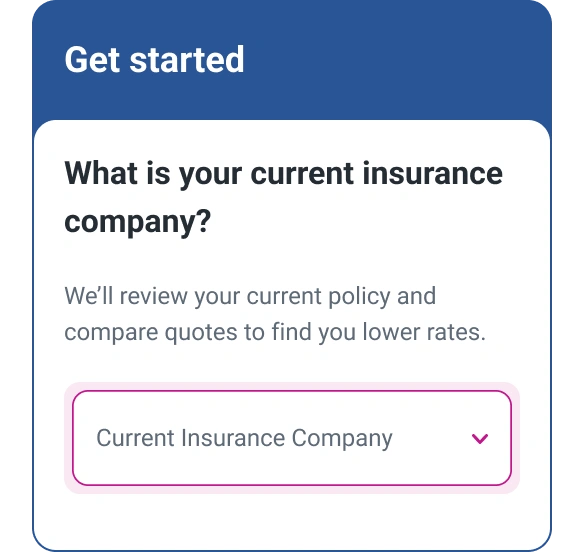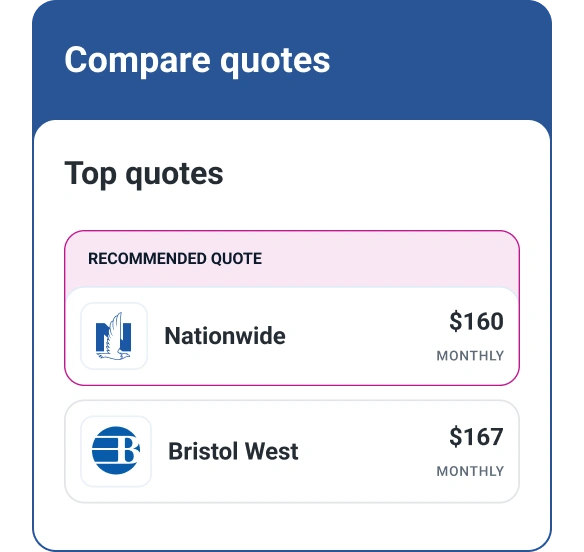How to Choose the Right Auto Insurance Policy

Choosing the right auto insurance policy is a balancing act that often comes down to needs and preferences versus costs. How do you choose the best auto insurance policy for your specific needs? It's possible if you follow a few simple steps, including determining adequate coverage for your situation, a manageable deductible and a carrier you can work with. Here's what you need to know.
Why Do You Need Auto Insurance?
Although it seems like an obvious question, knowing why you need auto insurance helps you to understand your objectives when shopping for an auto insurance policy. Car insurance consists of many moving parts, so knowing what you'd like to get out of the bargain is an important place to start. Here are a few things to consider:
- You need insurance to drive legally. Most states require at least a minimum level of liability coverage.
- You want to live up to your financial responsibility if you have an accident. If you cause damage or injury, you could be liable for tens or even hundreds of thousands of dollars in repairs or medical treatment.
- You want to ensure you have a safe car to drive. Plenty of mishaps can befall your car—accidents, tornadoes, theft. Insurance can help you recoup those losses and repair or replace your vehicle.
- You want to protect your financial health. Insurance is about mitigating risk. If you would not be able to replace a totaled vehicle or would struggle to pay for damages caused in a major accident, insurance can help you bridge these gaps without ruining your finances.
- You want to sleep soundly. It's 3 a.m. and the wind is howling. Earlier in the day, you saw your neighbor's patio umbrella tumbling down the street, hitting multiple parked cars along the way. Do you go back to sleep or lie awake thinking of all the ways your life would be upended if your windshield were shattered overnight? Insurance doesn't eliminate anxiety, but it can make some of life's little disasters feel more manageable.
What Types of Car Insurance Are There?
Figuring out how much car insurance you need will begin with understanding the types of coverages that make up most policies. Although car insurance includes a variety of options, the five main types for most drivers to consider are liability, collision, comprehensive, uninsured/underinsured motorist and medical or personal injury protection.
- Liability insurance helps cover the costs for personal injury or damage to others when you are legally responsible for an accident.
- Collision coverage applies to damage done to your vehicle in an accident.
- Comprehensive coverage is for damage to your vehicle that is not caused by an accident. Examples include theft or weather damage.
- Uninsured and underinsured motorist coverage—often sold together—help you defray the cost of an accident when the other driver has either no insurance or too little coverage.
- Medical coverage or personal injury protection can help cover the cost of medical care and, in some cases, recovery for both you and your passengers.
Liability coverage is the backbone of any auto insurance policy; the other types of coverage are essentially optional. One exception is if you are still paying off a car loan or are currently leasing your vehicle. In these cases, the lienholder will likely require you to carry collision and comprehensive coverage in addition to liability.
Your insurance carrier may also offer a slate of additional coverages: roadside assistance, glass breakage or gap insurance to cover the difference between your car's current value and replacement costs, to name a few. These coverage add-ons may or may not be practical for you and are entirely optional.
How to Choose Coverage and Set Deductibles
Your best policy strikes a balance between enough coverage and manageable cost. When contemplating coverages and deductibles, try thinking first about your financial resources. More assets might mean you should have more liability coverage: You don't want to put your assets at risk by choosing too little coverage and exceeding your coverage limits in the case of an accident.
At the same time, money in the bank may also mean you can tolerate a higher deductible. If you can afford $1,500 out of pocket to cover the cost of a major incident, you'll save on premiums year after year. Also ask yourself if you would need or want to use insurance to pay for a small repair—say, $500. If not, you might be better off setting a higher deductible and pocketing the savings now.
You'd want to choose a lower deductible, however, if an unexpected car expense would pose a challenge for you. Although collision and comprehensive coverages will cost you upfront, they might be worth it if they spell the difference between getting back on the road quickly and going carless until you can save money for repairs or a replacement.
Also take into account the value of your vehicle. If your car is older, its payout value might not justify the cost of extra coverage. A 16-year-old car worth $3,750 with a $1,500 deductible will only yield $2,250 if it's totaled. Compare that with the cost of collision and comprehensive coverage month after month, and you might be better off saving the extra money toward a new car.
What Do You Need to Start Shopping for Insurance?
Car insurance rate calculations are not simple. They take into account how much risk an insurance company believes you represent, so you can expect to answer a lot of questions about your vehicle(s) and yourself when getting a quote. When you're ready to start shopping for a policy, it's helpful to have some information handy:
- A copy of your current auto insurance policy, if you have one
- Quick calculations of your current yearly and monthly auto insurance costs
- Vehicle identification numbers for all of your cars
- An estimate of how many miles you drive each car per year, including how many miles you commute each day
- Driver's license numbers for all drivers in your household
- Your state's requirements for insurance coverage, for reference
Additionally, the insurance company will factor in demographic and lifestyle information that will help them calculate your rate. For example, they may want to know your age, whether you're married or single, and whether you own or rent your home. They will also check your driving and claims records. And in most states, they'll check your credit as well, using a special credit score for insurance. Preemptively checking your credit report and credit score in advance will help you be prepared—and take steps to improve your score if need be.
If you have auto insurance and like your current carrier, that may be a good place to start. Ask them to review your policy with you and suggest any opportunities to lower your premium—or adjust coverage if they can make a good case for doing so.
You can also contact any other insurance company or independent insurance agent for information, or get multiple quotes quickly by shopping online, where any number of sites can provide instant quotes from multiple carriers using a single form.
Once you have at least three viable quotes, do a side-by-side comparison. Rates can vary widely between carriers, but make sure the coverage and deductibles included in each quote match up to be sure you're getting a true comparison.
How Can You Lower Your Insurance Costs?
Even after you've received your quotes, there may be several ways to lower your auto insurance costs. You can always sharpen your pencil and take another look at your coverage limits and deductibles. Also inquire directly with each company about discounts. These discounts vary from company to company, but here is a short list of typical options:
- Good driver
- Low/verified mileage
- Good student
- Multi-car
- Multi-policy
- Professional, occupational or alumni affiliation
- New car
- Car safety
- Anti-theft
If you don't drive your car much, you might investigate a special type of car insurance that's based on your usage. Pay-per-mile insurance options, which include Metromile and Allstate Milewise, charge a low base rate plus a per-mile fee. A low monthly mileage could save you some dollars. Other policies require you to use a smartphone or third-party device to monitor your driving and reward you with low rates if your driving checks out. Progressive's Snapshot is one example.
Which Insurance Company Is the Right Fit?
Once you've established the right policy components and discovered the best rates, your final consideration is which insurance carrier is right for you. Beyond budget, it's important to look for an insurance company that has a strong track record of financial stability. Rating companies like J.D. Power have information to share; referrals from family and friends are another excellent source of intelligence. Also check your own gut: Were your interactions with each company pleasant and professional? Do you think they would be helpful in the event of an accident or loss?
Smarter Shopping Pays
Unlike just about anything else you shop for, insurance is a product you hope never to use. But if you choose your policy wisely—so you can use it as a tool to protect your financial (and emotional) well-being—it's a product you'll be grateful to have when you need it. Balance the value of coverage wisely against the costs, and you'll find the right policy for you.
Don’t overpay for auto insurance
If you’re looking for ways to cut back on monthly costs, it could be a good idea to see if you can save on your auto insurance.
Find savingsAbout the author
Gayle Sato writes about financial services and personal financial wellness, with a special focus on how digital transformation is changing our relationship with money. As a business and health writer for more than two decades, she has covered the shift from traditional money management to a world of instant, invisible payments and on-the-fly mobile security apps.
Read more from Gayle

